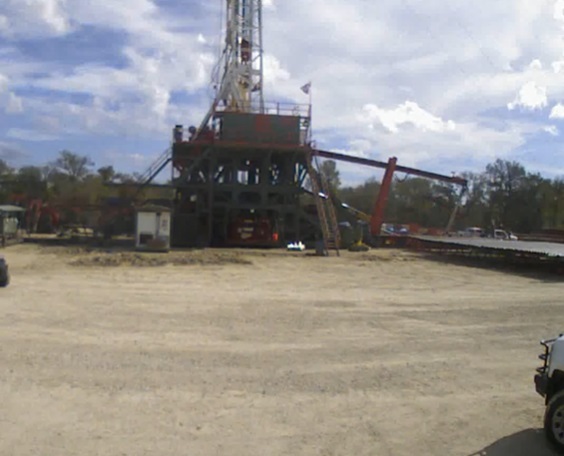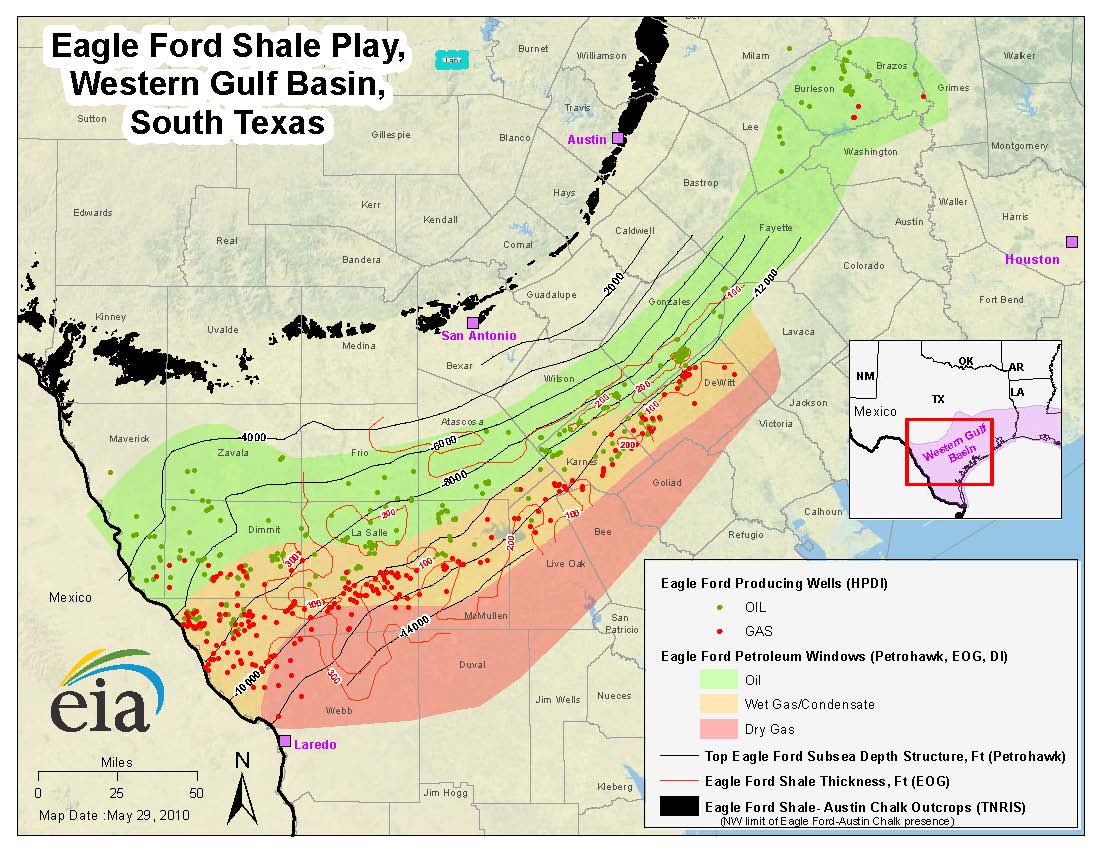Eagle Ford Shale Development
Tidal Petroleum's primary focus since 2010 has been the Eagle Ford Shale. This shale trend has low dry hole risk and excellent longevity. The extreme advancements in drilling, completion and fracing techniques have made this play the most prolific oil and gas play in the United States. Tidal Petroleum operates in the premier areas of the Eagle Ford Shale such as Karnes, Dewitt and Gonzales counties. We share lease lines with top tier public explorations companies such as EOG, Murphy Oil and Gas, Penn Virginia, and Pioneer Natural Resources among others.
This illustration shows the Eagle Ford Shale wells drilled by Tidal to date.

Eagle Ford Shale has been one of the most active, and profitable oil discovery's made in the last several decades. Its characteristics make it very attractive to many types of investing. Due to the cost associated with the technological sophistication of the drilling and completion process this formation is normally limited to larger more advanced oil and gas firms. This Video illustration will show the development of the play.
What is the Eagle Ford Shale?

The Eagle Ford Shale is a hydrocarbon producing formation of significant importance due to its capability of producing both gas and more oil than other traditional shale plays. It contains a much higher carbonate shale percentage, upwards to 70% in south Texas, and becomes shallower and the shale content increases as it moves to the northwest. The high percentage of carbonate makes it more brittle and "fracable". The shale play trends across Texas from the Mexican border up into East Texas, roughly 50 miles wide and 400 miles long with an average thickness of 250 feet. It is Cretaceous in age resting between the Austin Chalk and the Buda Lime at a depth of approximately 4,000 to 12,000 feet. It is the source rock for the Austin Chalk and the giant East Texas Field. The name has often been misspelled as "Eagleford". Fracking has become significantly more effective since the innovation of horizontal drilling. Now that wells can be moved horizontally through shale beds, hydraulic fracturing is one of the primary ways manufacturers retrieve natural gas today, used in nine out of ten of the country's natural gas wells. The Eagle Ford Shale yields both wet and dry gas.
How Long will Eagle Ford Shale Wells Last?

The life span of Eagle Ford shale wells is proving to be much longer than those drilled in the Austin Chalk a number of years ago, but will they be long term producers of oil and gas? Eagle Ford shale well life expectancy could be as long as thirty years, according to a recent report from EOG Resources. According to that report, 40% of an Eagle Ford shale well's production will come in the first five years, followed by a long decline curve lasting perhaps as many as thirty years. After the first ten years or so, Eagle Ford shale wells most likely become "stripper wells" unless some kind of secondary recovery method such as CO2 or dry gas injection is used, or the well is re-fracked, etc. (Note that EOG Resources is already planning a dry gas injection pilot project as an attempt to boost the ultimate recovery factor.)
How Much Oil Will Be Left in the Ground?
It has been estimated by some petroleum geologists that more than 75% of all the world's oil is still left in the "mother rock" or source rocks, which happen to be shale. The rest of that oil migrated upward and was trapped in other porous rock formations where only a fraction has been recovered. EOG Resources expects that the recovery factor for the Eagle Ford shale will be about 5%, compared to the Bakken Shale at 10%. Will oil and gas companies end up leaving in place 95% of the oil held in the Eagle Ford shale?

The most likely answer is "no", and many companies are already anticipating using secondary recovery methods, such as CO2 injection, to force more oil out of declining Eagle Ford shale wells. In the technology industry there is a theory known as "Moore's Law", which states that the memory capacity of computer chips will double every two years. In the oil and gas industry, it has been found that with every doubling of wells in a shale play, productivity increases by up to 23%. New frac techniques, secondary recovery methods, longer laterals and closer well spacing will most likely be used to increase the amount of oil recovered from the Eagle Ford shale far beyond 5%. Some say the original reserve estimates could double or possibly triple over the life of a well with the advancement in technology and techniques.
How large is the Eagle Ford Shale?
The shale play trends across Texas from the Mexican border up into East Texas, roughly 50 miles wide and 400 miles long with an average thickness of 250 feet. The Eagle Ford Shale development is so large and dense it can actually be seen from space. This is a "night lights" image of southeast Texas from NASA's Suomi satellite. The major cities of Austin, San Antonio, Houston, Corpus Christi and Laredo can clearly be seen in the image. The crescent-shaped grouping of lights south of San Antonio is the Eagle Ford Shale trend being heavily drilled and produced. The lights are a combination of illuminated active drilling rigs and natural gas flaring.

